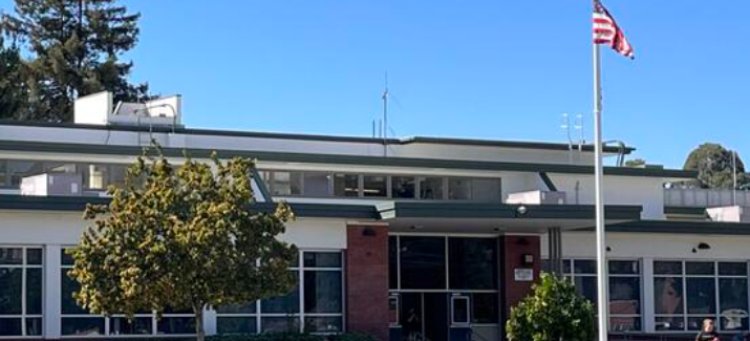Silicon Valley schools implement cell phone restrictions
Silicon Valley schools implement cell phone restrictions

San Jose schools are limiting cell phone use during classes in an effort to steer students away from the ongoing stress of screen time toward better academic performance and wellness.
In response to students distracted from learning by social media, texts and notifications, local schools are stepping up cell phone policies. This follows State Superintendent of Public Instruction Tony Thurmond calling for school districts to join a statewide effort to restrict students’ cell phone use, citing evidence of harm to their mental health and negative impacts on learning.
Renata Sanchez, president of the San Jose Teachers Association, said these concerns are valid.
“Running a safe and efficient learning environment requires the teacher to have agency in their behavior management systems, including their classroom cell phone policy,” Sanchez told San José Spotlight. “We believe that any cell phone policy should honor the teacher’s preferences as the classroom leader and include teachers in the decision-making process.”
San Jose Unified School District allows schools to create their cell phone policies. Some teachers at Lincoln High School are having students place their cell phones in caddies.
A survey of Campbell Union High School District staff this year showed cell phones are an ongoing challenge. District policy requires student’s cell phones to be off or silenced and put away during class unless a student has a doctor’s note on file.
Students who violate the policy will receive a verbal warning the first time, a communication sent home the second time. On the third offense, the phone will be held in the office until after school and parents will be contacted. After a second confiscation, a student receives a disciplinary referral. A third results in a meeting with parents and a student behavioral contract.
“Our updated cell phone policy was informed by research and developed in response to staff concerns, and reflects our commitment to minimizing distractions and enhancing the quality of instruction,” CUHSD Superintendent Robert Bravo told San José Spotlight. “By focusing on what’s within our control, we aim to create a more effective learning environment for all students.”
A 2023 Pew Research Center survey of 1,453 U.S. teens found nearly half are online almost constantly. About 72% said they often or sometimes feel peaceful when they don’t have their smartphone, but 44% said they feel anxious without it.
Glenn Vander Zee, superintendent of East Side Union High School District, said cell phones can be useful tools but are otherwise distracting.
“Cell phones are only allowed to be used when specifically instructed to do so by a teacher,” Vander Zee told San José Spotlight. “ESUHSD is also proactively engaging our elementary school district partners to develop policies that are consistent for students and families.”
James Lick High School established cell phone guidelines in January, and every classroom has a central location where all cell phones can be kept.
“We all agreed… we’re going to have a clear, consistent policy,” Teacher Michael Gatenby told San José Spotlight. “Every teacher on this campus is trying to get cell phone use under control. You can already see an increased focus. Managing cell phones has been a game changer.”
Gatenby said he still confiscates student cell phones and puts them in his “phone hotel” once or twice a period. Students receive their phones back after class.
James Lick High School teacher Mark Adams said not all teachers agree a cell phone policy is needed. Some want students to be able to manage their own phones.
Joshua, a student who asked to only be identified by first name, said the guidelines might help some students, but not everyone needs them.
“I can control myself,” he told San José Spotlight. “For others, it might be a problem.”
Adams said some students argue for the need to have their phones to call their parents if they experience anxiety or want to track a health app. Others said not having it out helps them focus.
“No teacher wants to spend a good part of their class time monitoring cell phones,” Adams told San José Spotlight. “It’s frustrating as a teacher. Students give me 60% when they’re on their phones. That extra 40% that can make a lot of difference.”







